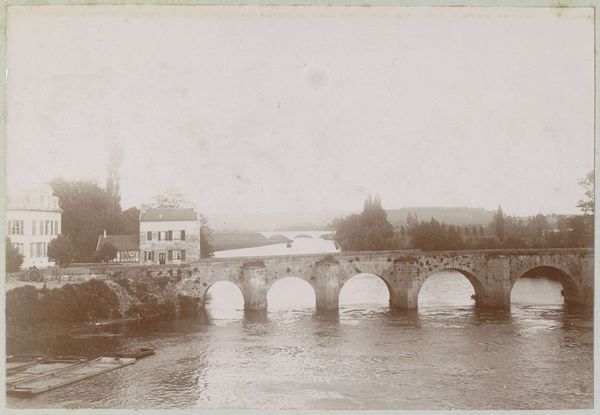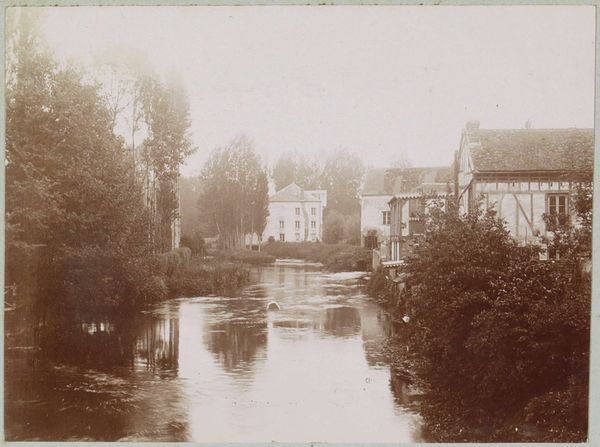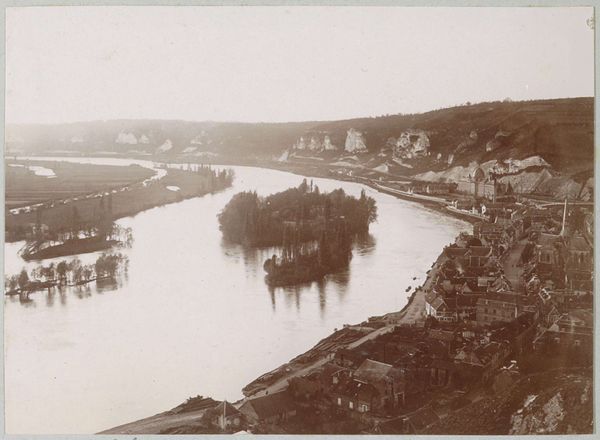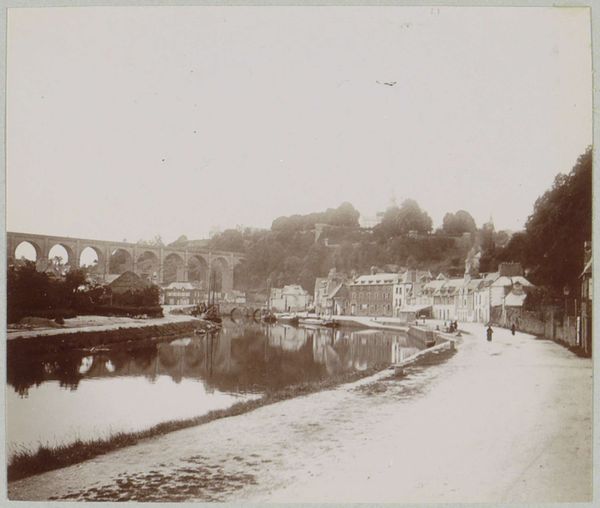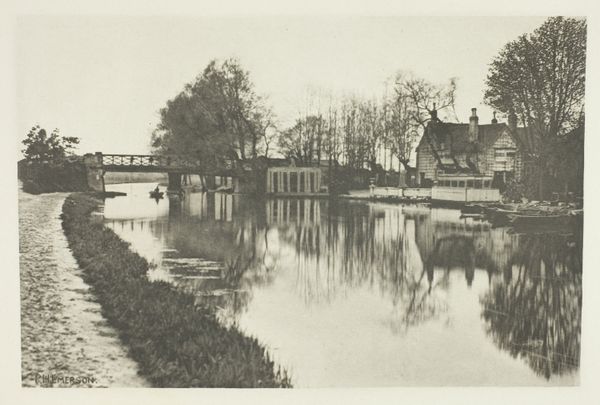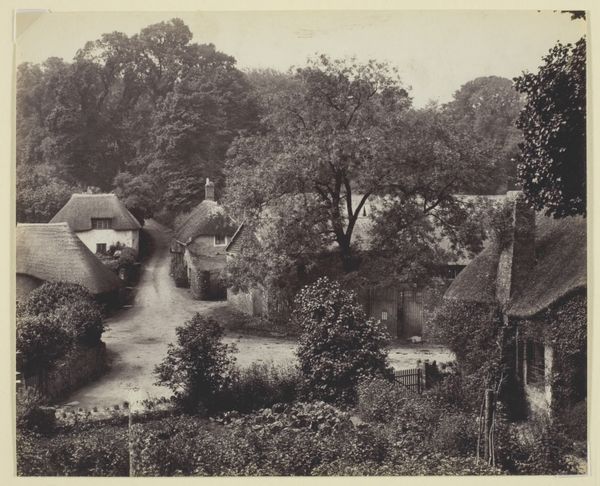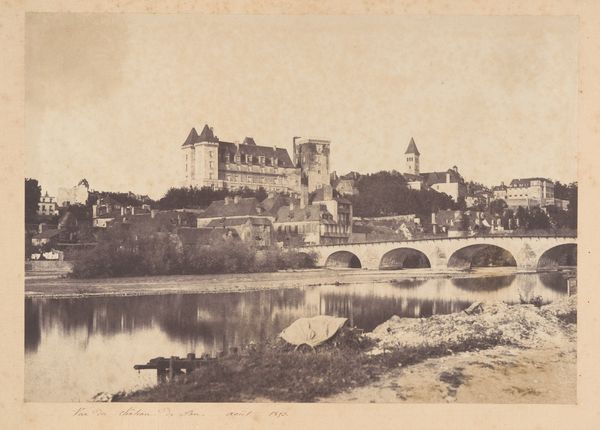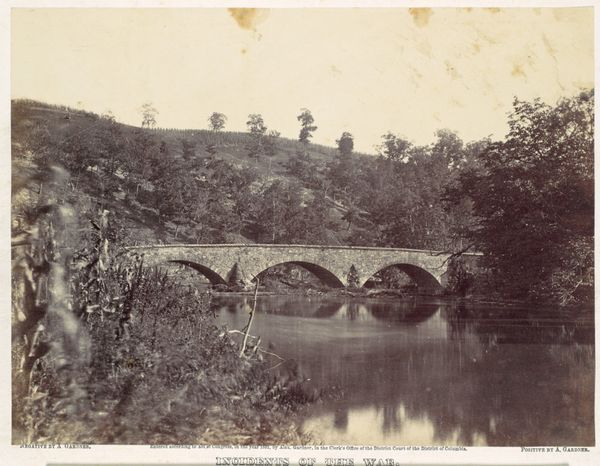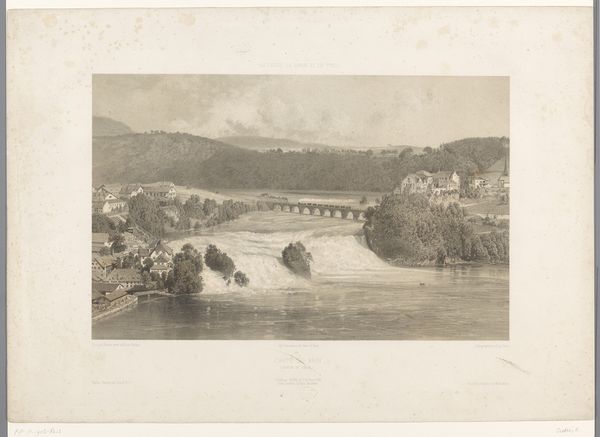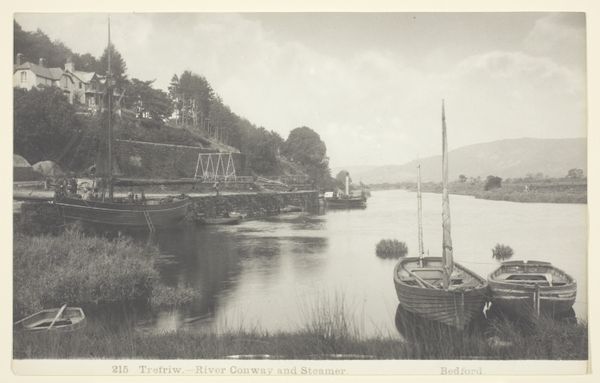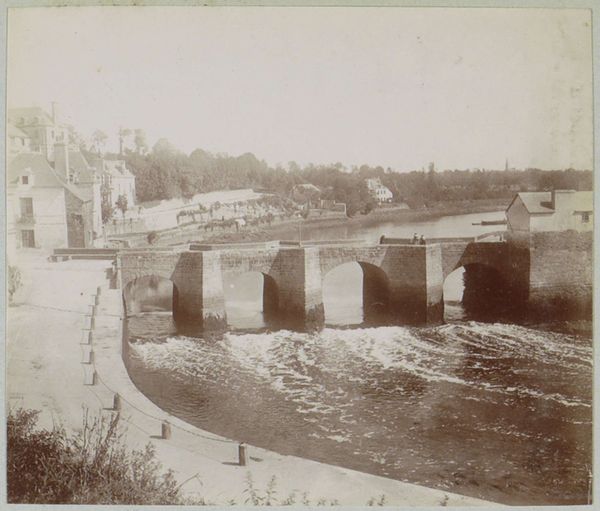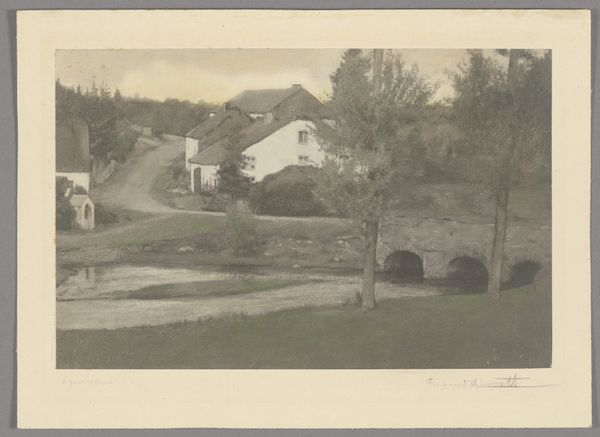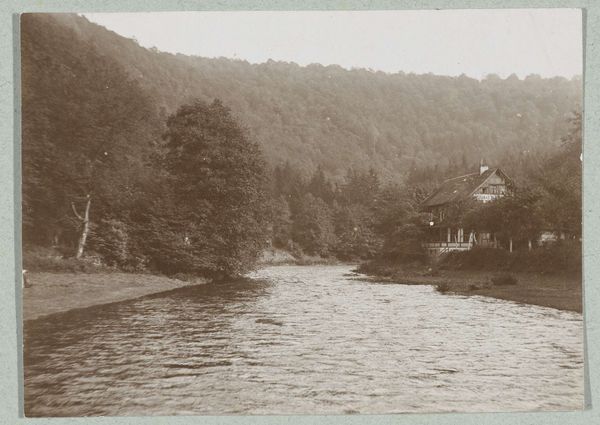![[Pont d'Ouilly on the Orne River, Normandy] by Louis-Adolphe Humbert de Molard](/_next/image?url=https%3A%2F%2Fd2w8kbdekdi1gv.cloudfront.net%2FeyJidWNrZXQiOiAiYXJ0ZXJhLWltYWdlcy1idWNrZXQiLCAia2V5IjogImFydHdvcmtzLzhiMGU1ZmZkLTdkMjYtNDRlOS05YjA1LWRmYTkzOTMwMDRlNS84YjBlNWZmZC03ZDI2LTQ0ZTktOWIwNS1kZmE5MzkzMDA0ZTVfZnVsbC5qcGciLCAiZWRpdHMiOiB7InJlc2l6ZSI6IHsid2lkdGgiOiAxOTIwLCAiaGVpZ2h0IjogMTkyMCwgImZpdCI6ICJpbnNpZGUifX19&w=3840&q=75)
[Pont d'Ouilly on the Orne River, Normandy] 1850 - 1851
0:00
0:00
daguerreotype, photography
#
landscape
#
daguerreotype
#
photography
#
historical photography
#
romanticism
#
cityscape
#
realism
Dimensions: Image: 17.9 x 22.2 cm (7 1/16 x 8 3/4 in.) Mount: 21 x 24 cm (8 1/4 x 9 7/16 in.)
Copyright: Public Domain
Louis-Adolphe Humbert de Molard created this photograph, Pont d'Ouilly on the Orne River, Normandy, in the 19th century using the calotype process. This photographic method, an early form of image-making, was groundbreaking, yet it was also rooted in the traditions of landscape painting. During this period, the French countryside became a site for exploring national identity and cultural heritage. Humbert de Molard, belonging to the French aristocracy, was keen on documenting rural life and architecture which he believed were disappearing because of industrialization. The image presents a serene view of a stone bridge and surrounding buildings. The presence of the river suggests themes of continuity and the passage of time. Light and shadow play across the scene, lending it a timeless quality that is characteristic of early photography. Although seemingly straightforward, photographs like this one offer a window into the cultural values of 19th-century France, where the romanticism of rural life coexisted alongside anxieties about modernity. How does this image evoke feelings of nostalgia or reflect the complex relationship between progress and preservation?
Comments
No comments
Be the first to comment and join the conversation on the ultimate creative platform.
